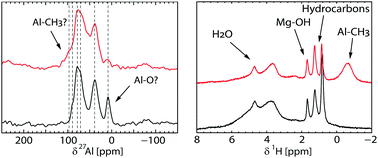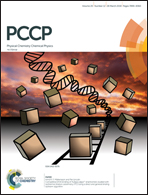The coordinative state of aluminium alkyls in Ziegler–Natta catalysts†
Abstract
The most commonly used cocatalyst species in Ziegler–Natta catalysts are aluminium alkyls. In this study we aim to find the interaction between aluminium centres of these activators and other components in the ZNC system. Initially we look at binary systems of Al-alkyl/MgCl2 and ternary systems of Al-alkyl/MgCl2/TiCl4, followed by donor containing systems. The aluminium alkyls prove to be very reactive species and only in the case of trimethylaluminium the alkyl is strongly present in the sample. This species appears to convert, however, over time. 1H NMR proves to be an efficient method to detect the presence of the Al-alkyl species. The use of high magnetic field strengths and 27Al MQMAS NMR alleviates signal overlap and gives insight in the dominant line broadening mechanisms thus providing an in-depth view of the cocatalyst. Various Al species with different coordinations can be identified in the samples. The heterogeneity of the samples turns out to have a larger effect on the 27Al NMR spectra than the quadrupolar interaction, which argues against the presence of highly distorted sites with mixed coordinations. Nevertheless for the samples indicating the presence of alkyls in the 1H NMR spectra, we observe an aluminium site at 97 ppm in the 27Al spectra that might be coordinated to an organic group.



 Please wait while we load your content...
Please wait while we load your content...